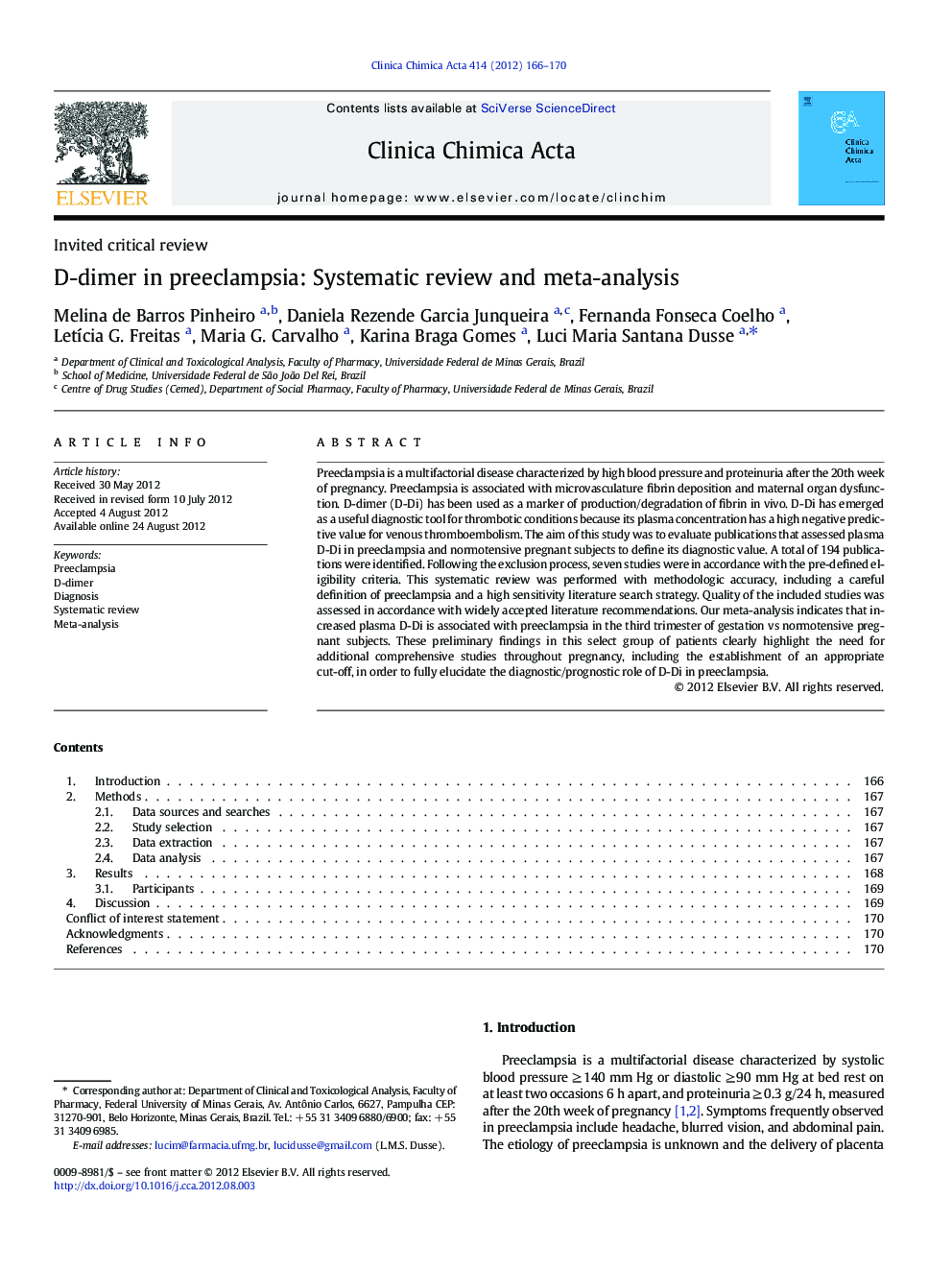| Article ID | Journal | Published Year | Pages | File Type |
|---|---|---|---|---|
| 8313981 | Clinica Chimica Acta | 2012 | 5 Pages |
Abstract
Preeclampsia is a multifactorial disease characterized by high blood pressure and proteinuria after the 20th week of pregnancy. Preeclampsia is associated with microvasculature fibrin deposition and maternal organ dysfunction. D-dimer (D-Di) has been used as a marker of production/degradation of fibrin in vivo. D-Di has emerged as a useful diagnostic tool for thrombotic conditions because its plasma concentration has a high negative predictive value for venous thromboembolism. The aim of this study was to evaluate publications that assessed plasma D-Di in preeclampsia and normotensive pregnant subjects to define its diagnostic value. A total of 194 publications were identified. Following the exclusion process, seven studies were in accordance with the pre-defined eligibility criteria. This systematic review was performed with methodologic accuracy, including a careful definition of preeclampsia and a high sensitivity literature search strategy. Quality of the included studies was assessed in accordance with widely accepted literature recommendations. Our meta-analysis indicates that increased plasma D-Di is associated with preeclampsia in the third trimester of gestation vs normotensive pregnant subjects. These preliminary findings in this select group of patients clearly highlight the need for additional comprehensive studies throughout pregnancy, including the establishment of an appropriate cut-off, in order to fully elucidate the diagnostic/prognostic role of D-Di in preeclampsia.
Related Topics
Life Sciences
Biochemistry, Genetics and Molecular Biology
Biochemistry
Authors
Melina de Barros Pinheiro, Daniela Rezende Garcia Junqueira, Fernanda Fonseca Coelho, LetÃcia G. Freitas, Maria G. Carvalho, Karina Braga Gomes, Luci Maria Santana Dusse,
